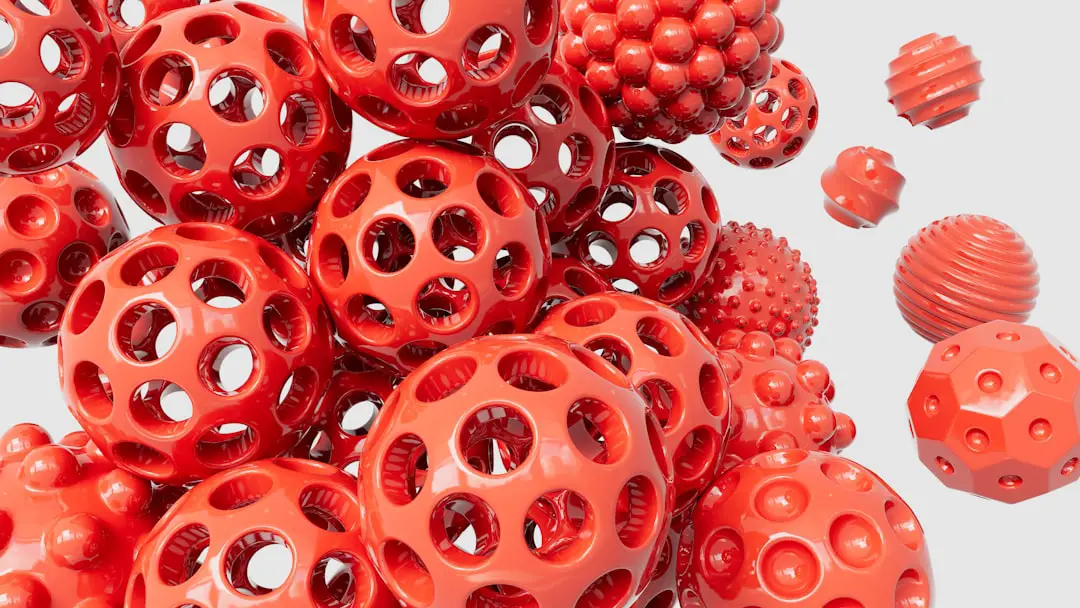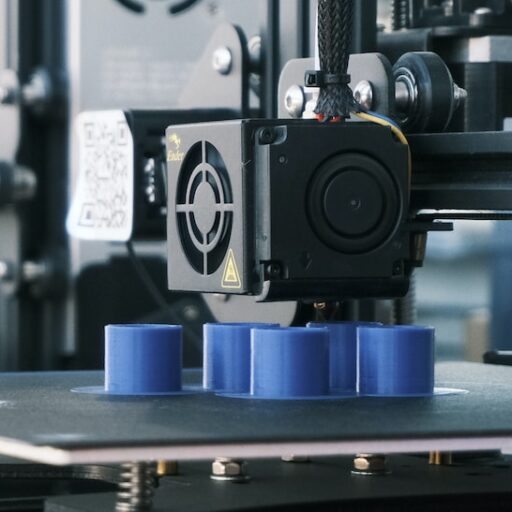Support our educational content for free when you purchase through links on our site. Learn more
What Can 3D Printing Be Used For? 20+ Amazing Ideas (2025) 🎉

Imagine holding in your hands a custom-designed prosthetic, a perfectly fitting phone case, or even a miniature architectural model—all created layer by layer by a 3D printer. Sounds like sci-fi? Well, it’s not! 3D printing has evolved from a niche hobby into a powerhouse technology transforming industries and everyday life alike. But what exactly can you make with a 3D printer? The answer might surprise you.
In this article, we’ll uncover over 20 incredible uses of 3D printing that span from rapid prototyping and aerospace parts to personalized medical devices and sustainable construction. Whether you’re a curious beginner or an industry pro, you’ll discover how additive manufacturing is reshaping design, production, and innovation. Plus, we’ll share insider tips, real-world examples, and future trends that will keep you hooked until the very last layer is printed!
Key Takeaways
- 3D printing enables rapid prototyping, custom manufacturing, and complex designs impossible with traditional methods.
- It’s widely used in automotive, aerospace, healthcare, dentistry, construction, and consumer goods sectors.
- The technology supports personalized products like prosthetics, orthotics, eyewear, and footwear.
- Bioprinting and sustainable manufacturing are exciting frontiers pushing 3D printing’s potential further.
- Challenges like print speed and material limitations exist but are rapidly improving with new innovations.
Ready to explore 3D printing gear and models?
- Shop top printers and materials: HP 3D Printers | Formlabs SLA | Fusion 360 CAD Software
- Browse thousands of free and premium designs: Thingiverse 3D Models | MyMiniFactory
Table of Contents
- Quick Tips and Facts About 3D Printing Uses ⚡
- The Evolution of 3D Printing: From Concept to Cutting-Edge Tech 🚀
- What Can You Actually Make with 3D Printing? 🎨
- Top 15 Applications of Additive Manufacturing You Didn’t Know About 🏭
- How 3D Printing is Revolutionizing Rapid Prototyping and Product Design ✨
- Why Choose 3D Printing for Rapid Prototyping? Pros and Cons ✅❌
- Industries Transformed by 3D Printing: A Sector-by-Sector Breakdown 🏢
- 3D Printing in Automotive: Driving Innovation on the Fast Lane 🚗
- Aerospace & Aviation: How 3D Printing is Taking Flight ✈️
- Building the Future: 3D Printing in Construction, Architecture & Interior Design 🏗️
- Medical Marvels: 3D Printing’s Impact on Healthcare and Surgery 🏥
- Dental Innovations: How 3D Printing is Changing Your Smile 😁
- Orthotics and Prosthetics: Personalized Care with 3D Printing 🦾
- Bioprinting Breakthroughs: Printing Life, One Layer at a Time 🧬
- 3D Printing’s Heroic Role During the COVID-19 Pandemic 😷
- Consumer Goods and 3D Printing: Customization Meets Convenience 🛍️
- Sustainability and 3D Printing: Greener Manufacturing? 🌱
- Challenges and Limitations of 3D Printing: What You Should Know ⚠️
- Future Trends: What’s Next for 3D Printing Technology? 🔮
- Want to Keep Exploring? Resources and Learning Paths 📚
- Conclusion: Why 3D Printing is a Game-Changer for Everyone 🎯
- Recommended Links for 3D Printing Enthusiasts 🔗
- FAQ: Your Burning Questions About 3D Printing Uses Answered ❓
- Reference Links and Further Reading 📖
Quick Tips and Facts About 3D Printing Uses ⚡
Welcome to the thrilling world of 3D printing! If you’re wondering what can 3D printing be used for, you’re in for a wild ride. At 3D Printed™, we’ve seen firsthand how this technology has exploded from hobbyist tinkering to industrial game-changer. Here are some quick facts and tips to get you started:
- 3D printing is an additive manufacturing process that builds objects layer by layer, allowing for incredible customization and complexity.
- It’s used in industries ranging from automotive to healthcare, aerospace to consumer goods.
- Rapid prototyping with 3D printing can cut product development time from months to days.
- Materials vary widely: plastics (PLA, ABS), metals (titanium, stainless steel), resins, ceramics, even bio-inks for living tissues.
- Desktop 3D printers are affordable and perfect for home use, while industrial machines handle large-scale, high-precision parts.
- The pandemic spotlighted 3D printing’s agility, producing PPE and ventilator parts on demand.
- Customization is king: from bespoke prosthetics to personalized footwear, 3D printing enables tailor-made solutions.
Want to dive deeper? Check out our related article on What Can I Do with a 3D Printer at Home? 25+ Ideas for 2025 🎉.
The Evolution of 3D Printing: From Concept to Cutting-Edge Tech 🚀
3D printing’s journey is a fascinating story of innovation and disruption. It all began in the 1980s with stereolithography (SLA), invented by Chuck Hull, which used UV lasers to cure resin layer by layer. Since then, the tech has evolved into a broad family of processes including Fused Deposition Modeling (FDM), Selective Laser Sintering (SLS), Multi Jet Fusion (MJF), and more.
Milestones in 3D Printing History
| Year | Breakthrough | Impact |
|---|---|---|
| 1984 | Chuck Hull patents SLA | Birth of 3D printing |
| 1990s | FDM and SLS developed | Affordable and versatile methods |
| 2005 | RepRap project launches | Open-source printers for hobbyists |
| 2010s | Metal 3D printing matures | Aerospace & automotive adoption |
| 2020+ | Bioprinting & mass customization | Medical & consumer revolutions |
Today, 3D printing is not just a prototyping tool but a full-fledged manufacturing method used worldwide. For a detailed dive into the tech, explore our 3D Printing Innovations category.
What Can You Actually Make with 3D Printing? 🎨
If you think 3D printers just spit out trinkets, think again! The possibilities are staggering. Here’s a taste of what you can create:
- Functional prototypes for product testing
- End-use parts in aerospace, automotive, and medical devices
- Custom prosthetics and orthotics tailored to individual patients
- Architectural models and interior design elements
- Jewelry, eyewear, and fashion accessories
- Consumer goods like phone cases, toys, and household gadgets
- Artistic sculptures and musical instruments
- Food items and even living tissues (bioprinting!)
The key is the layer-by-layer precision and design freedom that traditional manufacturing can’t match. Curious about specific projects? Browse our 3D Printable Objects collection for inspiration.
Top 15 Applications of Additive Manufacturing You Didn’t Know About 🏭
Let’s get specific. Here are 15 standout uses of 3D printing that showcase its versatility:
- Rapid Prototyping: Accelerate product development cycles.
- Custom Medical Devices: Prosthetics, implants, surgical guides.
- Aerospace Components: Lightweight, complex parts for rockets and planes.
- Automotive Parts: From concept cars to spare parts on demand.
- Architectural Models: Detailed scale models and custom building elements.
- Jewelry Design: Intricate, one-off pieces impossible with traditional casting.
- Consumer Electronics: Customized casings and functional parts.
- Footwear: Personalized insoles and midsoles for comfort and performance.
- Education: Hands-on learning tools and models for STEM fields.
- Art Restoration: Recreating missing sculpture parts with precision.
- Forensic Science: Reconstructing crime scene evidence or skulls.
- Food Printing: Novel culinary creations with chocolate and dough.
- Bioprinting: Printing tissues and organs for research and transplantation.
- Supply Chain Solutions: On-demand spare parts reducing inventory.
- Fashion and Wearables: Custom-fit eyewear, watches, and clothing accessories.
Each of these applications is backed by real-world success stories, like Volkswagen’s use of HP Metal Jet for car parts or SmileDirectClub’s 3D printed dental molds. For more, visit 3D Printing Innovations.
How 3D Printing is Revolutionizing Rapid Prototyping and Product Design ✨
Rapid prototyping is the secret sauce that made 3D printing a darling of designers and engineers. Here’s why:
Step-by-Step: From Idea to Prototype
- Design in CAD software: Tools like Fusion 360 or Blender let you create precise 3D models.
- Slice the model: Software like Cura or PrusaSlicer converts the design into printable layers.
- Print the prototype: The printer deposits material layer by layer, building the object.
- Test and iterate: Evaluate fit, function, or aesthetics and tweak the design quickly.
- Repeat: Print improved versions in hours or days, not weeks.
This process slashes development time and cost, enabling more iterations and better products. For a deep dive, check our 3D Design Software guides.
Why Choose 3D Printing for Rapid Prototyping? Pros and Cons ✅❌
Pros ✅
- Speed: Prototype in hours vs. weeks with traditional machining.
- Cost-effective: No expensive tooling or molds needed.
- Complexity: Create intricate geometries impossible with subtractive methods.
- Customization: Tailor designs for specific needs or clients.
- Material Variety: Plastics, metals, resins, composites.
Cons ❌
- Surface Finish: Some prints require post-processing for smoothness.
- Size Limitations: Desktop printers have build volume constraints.
- Material Properties: Not all 3D printed materials match injection-molded strength.
- Print Speed: Large or detailed parts can take many hours.
Overall, the benefits outweigh drawbacks for most prototyping needs. For industrial-grade parts, technologies like HP’s Multi Jet Fusion or Formlabs’ SLA printers provide excellent quality and speed.
Industries Transformed by 3D Printing: A Sector-by-Sector Breakdown 🏢
3D printing isn’t just a tool; it’s a manufacturing revolution touching nearly every industry. Here’s how:
Automotive 🚗
- Prototyping and producing lightweight, complex parts.
- On-demand spare parts reducing inventory costs.
- Custom tooling and jigs for assembly lines.
Aerospace & Aviation ✈️
- High-performance, heat-resistant parts for engines and airframes.
- Rapid iteration of designs for safety and efficiency.
Construction & Architecture 🏗️
- Printing scale models and full-scale building components.
- Custom furniture and interior design elements.
Medical & Healthcare 🏥
- Patient-specific implants, prosthetics, and surgical tools.
- Bioprinting tissues and organs for research.
Consumer Goods 🛍️
- Personalized products like eyewear, footwear, and jewelry.
- Rapid production of prototypes and limited runs.
Education 🎓
- Teaching STEM concepts with hands-on models.
- Training future engineers and designers.
For detailed case studies and innovations, explore our 3D Printing in Education and 3D Printing Innovations sections.
3D Printing in Automotive: Driving Innovation on the Fast Lane 🚗
The automotive industry has embraced 3D printing to speed up design cycles and reduce costs. Here’s what’s happening under the hood:
Key Uses
- Prototyping: Concept cars and parts tested rapidly.
- End-use parts: Lightweight brackets, air vents, and interior components.
- Tooling: Custom jigs and fixtures for manufacturing lines.
- Restoration: Recreating obsolete parts for classic cars.
Real-World Example: CUPRA Racing
Using the HP Jet Fusion 5200 Series, CUPRA Racing rapidly produced lightweight prototypes for side mirrors and air vents, cutting development time drastically.
Material Spotlight
- Nylon PA12 for durability and flexibility.
- Metal powders for functional, heat-resistant parts.
Want to explore automotive 3D models? Check out Thingiverse’s automotive section.
Aerospace & Aviation: How 3D Printing is Taking Flight ✈️
In aerospace, weight savings and reliability are paramount. 3D printing delivers both by enabling:
- Complex geometries that reduce part count and weight.
- Production of heat-resistant engine components.
- Rapid prototyping of new designs.
- On-demand replacement parts for maintenance.
Case Study: Relativity Space
Relativity uses 3D printing to manufacture entire rocket engines, slashing lead times and costs compared to traditional methods.
Materials & Technologies
- Titanium and Inconel alloys for strength and heat resistance.
- Selective Laser Melting (SLM) and Electron Beam Melting (EBM) are common.
For more aerospace insights, visit NASA’s additive manufacturing page.
Building the Future: 3D Printing in Construction, Architecture & Interior Design 🏗️
Imagine printing entire houses or intricate architectural models. That’s the future, and it’s already here.
Construction
- Large-scale 3D printers extrude concrete to build walls and structures.
- Sustainable, energy-efficient homes with reduced waste.
- The MX3D Bridge in Amsterdam, printed in stainless steel, is a landmark example.
Architecture
- Detailed scale models help visualize complex designs.
- Custom architectural elements like facades and lighting fixtures.
Interior Design
- Unique furniture pieces and decor items tailored to space and style.
- Rapid prototyping of design concepts.
Explore inspiring projects in our 3D Printable Objects category.
Medical Marvels: 3D Printing’s Impact on Healthcare and Surgery 🏥
3D printing is a life-changer in medicine, enabling:
- Custom implants and prosthetics perfectly fitted to patients.
- Surgical guides that improve precision and outcomes.
- Rapid production of medical devices and tools.
- Bioprinting tissues for research and transplantation.
Benefits for Patients
- Reduced surgery times and complications.
- Personalized treatment plans.
- Faster recovery due to better-fitting devices.
Case Study: Everex
Everex uses 3D printing to manufacture the Hemo One device for blood analysis, accelerating production and reducing costs.
For deeper medical insights, check out our 3D Printing Innovations articles.
Dental Innovations: How 3D Printing is Changing Your Smile 😁
Dentistry has been revolutionized by 3D printing, with applications including:
- Molds for clear aligners and retainers.
- Crowns, bridges, and dentures with precise fit.
- Surgical guides for implant placement.
Case Study: SmileDirectClub
SmileDirectClub leverages HP 3D printing to mass-produce molds for dental aligners, increasing volume and reducing turnaround time.
Materials Used
- Biocompatible resins for intraoral use.
- Durable polymers for long-lasting appliances.
Explore dental-related 3D printable models on MyMiniFactory.
Orthotics and Prosthetics: Personalized Care with 3D Printing 🦾
Gone are the days of one-size-fits-all prosthetics. 3D printing enables:
- Patient-specific devices tailored to anatomy and needs.
- Lightweight, comfortable, and functional prosthetics.
- Rapid iteration and replacement.
Inspiring Story
Matej, a father, created a custom 3D printed orthosis for his son Nik, who has cerebral palsy, enabling independent walking.
Industry Leaders
- Psyonic offers advanced bionic prosthetics using additive manufacturing.
- Open Bionics produces affordable, customizable robotic hands.
For prosthetic designs and inspiration, visit Pinshape’s prosthetics section.
Bioprinting Breakthroughs: Printing Life, One Layer at a Time 🧬
Bioprinting is the frontier where biology meets 3D printing. It involves:
- Printing layers of living cells with bio-inks.
- Creating tissues like skin, cartilage, and blood vessels.
- Researching organ printing for transplantation.
Cutting-Edge Research
Dr. Sam Pashneh-Tala at the University of Sheffield uses desktop SLA printers to create patient-specific vascular grafts, improving surgical outcomes.
Challenges
- Maintaining cell viability during printing.
- Vascularization and integration with host tissue.
Learn more about bioprinting advances in our 3D Printing Innovations section.
3D Printing’s Heroic Role During the COVID-19 Pandemic 😷
When the world faced PPE shortages, 3D printing stepped up:
- Rapid production of face shields, masks, and ventilator parts.
- Distributed manufacturing networks enabled local production.
- Companies like HP and Formlabs ramped up swab production.
Impact
- Millions of critical medical parts produced quickly.
- Supply chain bottlenecks alleviated.
- Demonstrated 3D printing’s agility in crisis.
For stories and lessons learned, see Formlabs’ COVID-19 response.
Consumer Goods and 3D Printing: Customization Meets Convenience 🛍️
3D printing is reshaping how we shop and personalize everyday items:
- Custom footwear with perfect fit and comfort (Nike, Adidas).
- Personalized eyewear frames tailored to facial scans.
- Unique jewelry and fashion accessories.
- Custom gaming controllers and phone cases.
Mass Customization
Brands like Gillette’s Razor Maker™ let customers design their own handles, blending mass production with personalization.
Benefits
- Reduced waste and overproduction.
- Enhanced user satisfaction.
- Faster time from design to delivery.
Explore customizable 3D printable objects in our 3D Printable Objects category.
Sustainability and 3D Printing: Greener Manufacturing? 🌱
Is 3D printing eco-friendly? The answer is nuanced:
Advantages
- Less material waste: Additive process uses only what’s needed.
- On-demand production: Reduces inventory and overproduction.
- Lightweight parts: Lower fuel consumption in automotive and aerospace.
- Recyclable materials: Some filaments and powders are recyclable.
Challenges
- Energy consumption can be high for some processes.
- Limited recycling infrastructure for certain materials.
- Post-processing chemicals may have environmental impact.
Overall, 3D printing offers promising sustainability benefits when paired with responsible practices.
Challenges and Limitations of 3D Printing: What You Should Know ⚠️
Before you jump in, consider these hurdles:
- Print speed: Complex or large parts can take hours or days.
- Material limitations: Not all materials match traditional manufacturing strength or finish.
- Post-processing: Often required for surface smoothing or curing.
- Size constraints: Desktop printers have limited build volumes.
- Cost: Industrial machines and materials can be expensive.
- Intellectual property: Easy replication raises copyright concerns.
Knowing these helps set realistic expectations and guides choosing the right technology for your needs.
Future Trends: What’s Next for 3D Printing Technology? 🔮
The future looks dazzling:
- Multi-material and color printing: More vibrant, functional parts.
- Faster printing speeds: Innovations like Continuous Liquid Interface Production (CLIP).
- AI-driven generative design: Optimizing parts for performance and material use.
- Expanded bioprinting: Towards functional organs and tissues.
- Integration with robotics: Automated printing and assembly lines.
- Sustainable materials: Biodegradable and recycled feedstocks.
Stay ahead by following our 3D Printing Innovations updates!
Want to Keep Exploring? Resources and Learning Paths 📚
Ready to dive deeper? Here’s where to go next:
- 3D Printable Objects: Find thousands of free and paid models to print.
- 3D Design Software: Tutorials and reviews on CAD tools like TinkerCAD, Fusion 360, and Blender.
- 3D Printing Innovations: Latest tech breakthroughs and industry news.
- 3D Printing in Education: How schools and universities are using 3D printing.
Check out our curated categories on 3D Printed™ to fuel your passion and skills.
Conclusion: Why 3D Printing is a Game-Changer for Everyone 🎯

Wow, what a journey! From humble beginnings in the 1980s to revolutionizing industries like automotive, aerospace, healthcare, and consumer goods, 3D printing has proven itself as a versatile, powerful, and downright magical technology. Whether you’re a hobbyist dreaming of crafting custom phone cases or a manufacturer producing lightweight aerospace components, 3D printing opens doors to creativity, efficiency, and personalization like never before.
We’ve seen how rapid prototyping accelerates product development, how medical applications save lives with custom implants and prosthetics, and how the pandemic showcased 3D printing’s agility in crisis response. Plus, the future promises even more exciting innovations with AI-driven design, bioprinting, and sustainable materials on the horizon.
If you’re considering diving into 3D printing, remember the trade-offs: print speed, material limitations, and post-processing needs. But with the right printer and mindset, the benefits far outweigh the challenges.
So, whether you want to print your next masterpiece, innovate in your industry, or simply explore a fascinating new hobby, 3D printing is your ticket to a world of endless possibilities. Ready to start printing? We’re here to guide you every step of the way!
Recommended Links for 3D Printing Enthusiasts 🔗
👉 Shop 3D Printing Brands and Products:
- HP Jet Fusion 5200 Series:
Thingiverse Search: HP Jet Fusion | HP Official Website - Formlabs SLA 3D Printers:
Thingiverse Search: Formlabs | Formlabs Official Website - Open Bionics Prosthetics:
Pinshape Prosthetics | Open Bionics Official Website - Psyonic Bionic Prosthetics:
Thingiverse Prosthetics | Psyonic Official Website - Fusion 360 CAD Software:
Autodesk Fusion 360
Recommended Books on 3D Printing:
- 3D Printing: The Next Industrial Revolution by Christopher Barnatt — Amazon Link
- Fabricated: The New World of 3D Printing by Hod Lipson and Melba Kurman — Amazon Link
- Mastering 3D Printing by Joan Horvath and Rich Cameron — Amazon Link
FAQ: Your Burning Questions About 3D Printing Uses Answered ❓

What are some practical applications of 3D printing in everyday life?
3D printing touches daily life in surprising ways! From custom phone cases, kitchen gadgets, and replacement parts for household items to personalized jewelry and toys, it offers affordable customization. Many use 3D printers to create organizational tools like drawer dividers or cable holders, saving money and reducing waste. Plus, hobbyists print cosplay props, board game pieces, and even musical instruments. The key is the ability to tailor objects to your exact needs and preferences.
Read more about “15 Epic 3D Printer Projects to Try in 2025 🚀”
What are the most popular items to 3D print for beginners?
Beginners often start with simple, functional objects that print quickly and teach the basics. Popular items include:
- Keychains and phone stands
- Planters and vases
- Cookie cutters and kitchen tools
- Replacement knobs or hooks
- Toys and figurines
These projects help newcomers learn slicing, material handling, and post-processing without frustration. As skills grow, users move on to more complex models like mechanical parts or artistic sculptures.
Read more about “What Are the 12 Most Common 3D Printing Uses in 2025? 🚀”
Can 3D printing be used for creating custom phone cases and other electronics accessories?
Absolutely! 3D printing shines in custom electronics accessories because it allows perfect fit and unique designs. You can print phone cases tailored to your device’s exact dimensions, with personalized textures or logos. Other accessories include headphone holders, cable organizers, smartwatch bands, and even drone parts. Materials like TPU offer flexibility for shock absorption, while rigid plastics provide sturdy protection. Check out Thingiverse’s electronics accessories for ready-to-print designs.
What are some creative ways to use 3D printing for home decoration and organization?
3D printing lets you unleash your inner interior designer! Here are some creative ideas:
- Custom lampshades and light fixtures with intricate patterns.
- Wall hooks and shelves designed to fit your space perfectly.
- Decorative planters and vases in unique shapes.
- Personalized drawer organizers and storage bins.
- Artistic sculptures or photo frames tailored to your style.
Because you control the design, you can match colors, sizes, and themes exactly. Plus, printing on demand means you can refresh your decor anytime without buying mass-produced items.
How does 3D printing contribute to sustainability in manufacturing?
3D printing reduces waste by building objects layer by layer, using only the material needed. It enables on-demand production, cutting down inventory and excess manufacturing. Lightweight parts reduce fuel consumption in transport industries. Some printers use biodegradable or recycled filaments, further lowering environmental impact. However, energy use and material recycling remain challenges, so sustainable practices are essential.
Read more about “What Do You Mean by 3D Printing? Discover 10 Fascinating Insights! 🤔”
Is bioprinting ready for widespread medical use?
Bioprinting is an exciting frontier but still largely experimental. Researchers have successfully printed tissues like skin, cartilage, and blood vessels, with promising results in lab settings. Printing fully functional organs for transplantation is a complex challenge due to vascularization and immune response issues. While clinical applications are limited today, ongoing advances suggest bioprinting will become a vital medical tool in the future.
Read more about “What is the Most Complex 3D Printed Object? Top 10 Revealed! 🤯 …”
Reference Links and Further Reading 📖
- HP 3D Printing Solutions
- Formlabs 3D Printing Technology
- Open Bionics Prosthetics
- Psyonic Advanced Prosthetics
- Autodesk Fusion 360 CAD Software
- NASA Additive Manufacturing
- Built In: 3D Printing – What It Is, How It Works and Examples
- Thingiverse 3D Printable Models
- Pinshape 3D Models
- MyMiniFactory 3D Models
Ready to start your 3D printing adventure? Dive into our 3D Printable Objects and 3D Printing Innovations for endless inspiration and expert tips!



